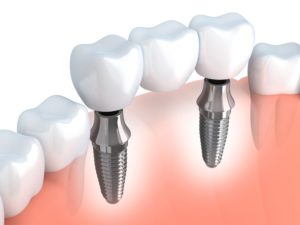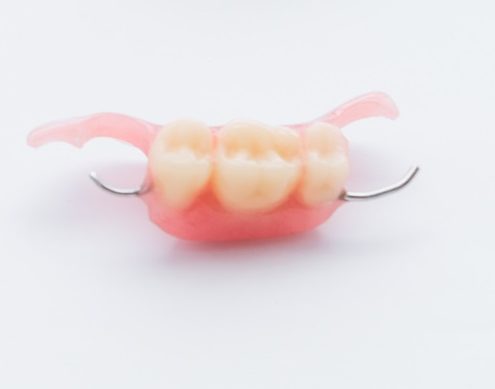Within the dental techniques used to replace a few adjacent teeth, there is also the bridge technique on dental implants. Let’s see what it is.
What is the bridge on dental implants?
As you can imagine from the name, the bridge on dental implants is a prosthesis supported by two dental implants. Unlike the bridge on natural teeth used to replace 1 or 2 teeth, this technique does not contemplate the need to intervene on natural teeth and allows replacing 3 or 4 teeth.
If the bridge on natural teeth rests on the patient’s teeth, the bridge on implants therefore includes the insertion of 2 implants that will act as a pillar to a prosthesis with at least 3 dental elements.

In which cases it is useful to insert a bridge on implants
The bridge on implants is practicable when it is necessary to remedy the loss of a few adjacent teeth. The use of implants avoids the use of annoying mobile prostheses.
A mobile prosthesis capable of replacing 3-4 teeth offers poor stability which is only partially improved by the insertion of metal anchor hooks. These hooks are often visible and therefore spoil the aesthetics of the mouth.

The advantage for the patient is that of having stable teeth, unlike the discomfort that can cause skeletal mobility, and a more effective aesthetic result.
In some cases the dentist finds himself having to choose between a bridge on natural teeth, treating and using natural teeth as pillars, and a bridge on implants, a preferable solution when natural teeth that should act as a pillar are very compromised and do not give the necessary duration guarantees.
For a dentist the choice of extracting teeth is always the last of the possible alternatives, preserving a natural tooth should in fact be a priority for all professionals in the field of dentistry.
When the extraction involves few elements, and therefore there is a problem of partial edentulism, the bridge on implants is the best solution to replace them.
What is the process for inserting the bridge on implants
It all starts with a first visit that allows you to evaluate the patient’s clinical history, to carry out the necessary instrumental investigations (Orthopanoramic and / or TAC) and that provides the information necessary for planning the intervention.
Although in our center specialized in dental implantology, fixed teeth are regained on average in one day, in the case of the bridge on implants it is generally to follow the traditional procedures. Generally the teeth involved are the molars and if the prosthesis is positioned immediately, the strong masticatory load to which those teeth are exposed would risk causing the operation to fail.
For this and for other reasons, the bridge on implants is completed in at least 2 sessions.
The absence of 3 molars could hide some further pitfalls: the absence of bone. In such circumstances, before proceeding with implant surgery it is necessary to intervene with a bone reconstruction / augmentation of the maxillary sinus.
Post intervention
The bridge on implants is a structure that is precisely supported by dental implants. For this reason it is necessary, in the post-intervention phase, to pay close attention to the care of the implants.
A peri-implantitis even in only one of the two implants that act as a pillar could cause failure of the entire dental bridge.
To avoid implant failure it is important not to neglect oral hygiene, carefully clean dental implants and plan, without deserting, periodic checkups by the dentist.
By consistently following these few tips, the bridge on dental implants can last a long time without causing any kind of complication.
















